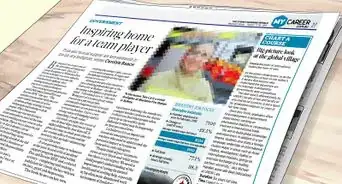This article was co-authored by Courtney Copriviza and by wikiHow staff writer, Christopher M. Osborne, PhD. Courtney Copriviza is an Elementary School Teacher based in Maui, HI. Courtney specializes in elementary education, classroom management, and social and emotional development. She holds a BA in Communication with a minor in Urban Education and an MA in Teaching from Santa Clara University. Courtney has also taught high school in Madrid, Spain. She is a member of Kappa Delta Pi International Honors Society in Education.
There are 10 references cited in this article, which can be found at the bottom of the page.
wikiHow marks an article as reader-approved once it receives enough positive feedback. In this case, 97% of readers who voted found the article helpful, earning it our reader-approved status.
This article has been viewed 90,666 times.
Even in a world of computers and smartphones, handwriting is an essential skill on its own merits. It’s also a learning tool that improves overall academic success.[1] Teaching handwriting can be challenging but also very rewarding, so we’ve provided a complete list of helpful advice for all stages of writing instruction. So encourage your students to pick up their pencils and have some fun with you!
Things You Should Know
- Introduce letters in related groups, use tracing and guide paper, and work on slant, size, and spacing as students’ skills develop.
- Build young learners’ fine motor skills, then slowly introduce things like writing position, pencil grip, and line- and curve-drawing activities.
- Hold frequent (daily) but relatively short (15-30 minute) sessions, and continue to maintain a positive and encouraging attitude.
Steps
Expert Q&A
-
QuestionHow can you help children to improve their handwriting?
 Courtney CoprivizaCourtney Copriviza is an Elementary School Teacher based in Maui, HI. Courtney specializes in elementary education, classroom management, and social and emotional development. She holds a BA in Communication with a minor in Urban Education and an MA in Teaching from Santa Clara University. Courtney has also taught high school in Madrid, Spain. She is a member of Kappa Delta Pi International Honors Society in Education.
Courtney CoprivizaCourtney Copriviza is an Elementary School Teacher based in Maui, HI. Courtney specializes in elementary education, classroom management, and social and emotional development. She holds a BA in Communication with a minor in Urban Education and an MA in Teaching from Santa Clara University. Courtney has also taught high school in Madrid, Spain. She is a member of Kappa Delta Pi International Honors Society in Education.
Elementary School Teacher See to it that children hold the pencil correctly and sit in a proper position while writing. They should not rush through their writing.
See to it that children hold the pencil correctly and sit in a proper position while writing. They should not rush through their writing. -
QuestionWhat is the correct way to sit while writing?
 Courtney CoprivizaCourtney Copriviza is an Elementary School Teacher based in Maui, HI. Courtney specializes in elementary education, classroom management, and social and emotional development. She holds a BA in Communication with a minor in Urban Education and an MA in Teaching from Santa Clara University. Courtney has also taught high school in Madrid, Spain. She is a member of Kappa Delta Pi International Honors Society in Education.
Courtney CoprivizaCourtney Copriviza is an Elementary School Teacher based in Maui, HI. Courtney specializes in elementary education, classroom management, and social and emotional development. She holds a BA in Communication with a minor in Urban Education and an MA in Teaching from Santa Clara University. Courtney has also taught high school in Madrid, Spain. She is a member of Kappa Delta Pi International Honors Society in Education.
Elementary School Teacher Sit in a chair with your feet flat on the floor. Sit erect and write on a desk.
Sit in a chair with your feet flat on the floor. Sit erect and write on a desk. -
QuestionI am trying to teach my granddaughter who lives in another state. I sent ruled paper and pencils and tracing paper. What else should I be doing?
 Community AnswerI would try Skype as well, or some other live-view device, because your granddaughter should have someone to model herself after.
Community AnswerI would try Skype as well, or some other live-view device, because your granddaughter should have someone to model herself after.
References
- ↑ https://www.education.vic.gov.au/school/teachers/teachingresources/discipline/english/literacy/writing/Pages/litfocushandwriting.aspx
- ↑ http://www.educationworld.com/a_curr/profdev/profdev110.shtml
- ↑ https://www.designastudy.com/how-to-teach-handwriting/
- ↑ https://www.education.vic.gov.au/school/teachers/teachingresources/discipline/english/literacy/writing/Pages/litfocushandwriting.aspx
- ↑ http://www.educationworld.com/a_curr/profdev/profdev110.shtml
- ↑ http://www.designastudy.com/teaching/tips-1198.html
- ↑ http://www.educationworld.com/a_curr/profdev/profdev110.shtml
- ↑ http://www.educationworld.com/a_curr/profdev/profdev110.shtml
- ↑ https://www.tes.com/magazine/archive/how-teach-handwriting-comprehensive-guide
- ↑ Courtney Copriviza. Elementary School Teacher. Expert Interview. 18 June 2021.
- ↑ https://www.griffinot.com/teaching-handwriting-to-children-what-every-teacher-must-know/
- ↑ https://www.tes.com/magazine/archive/how-teach-handwriting-comprehensive-guide
- ↑ https://www.education.vic.gov.au/school/teachers/teachingresources/discipline/english/literacy/writing/Pages/litfocushandwriting.aspx
- ↑ https://www.education.vic.gov.au/school/teachers/teachingresources/discipline/english/literacy/writing/Pages/litfocushandwriting.aspx
- ↑ https://teacherblog.evan-moor.com/2018/05/01/how-to-teach-my-child-cursive-complete-instructions/
- ↑ https://teacherblog.evan-moor.com/2018/05/01/how-to-teach-my-child-cursive-complete-instructions/
- ↑ http://www.kidzone.ws/cursive/index.htm
- ↑ https://www.readingrockets.org/article/importance-teaching-handwriting
About This Article
To teach handwriting, start by giving your students worksheets that they can practice tracing the alphabet on. You can also have them practice drawing vertical, horizontal, diagonal, and curved lines so they're familiar with the different strokes they'll need to know. Once they're comfortable with that, assign them a few letters at a time to work on so they don't get overwhelmed. After you've worked through the alphabet, use guide paper to teach your students about letter size, spacing, and slant. To learn how to teach cursive handwriting, scroll down!
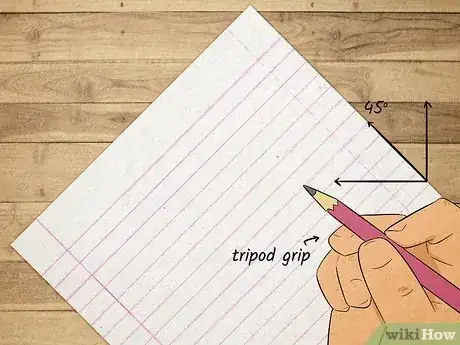
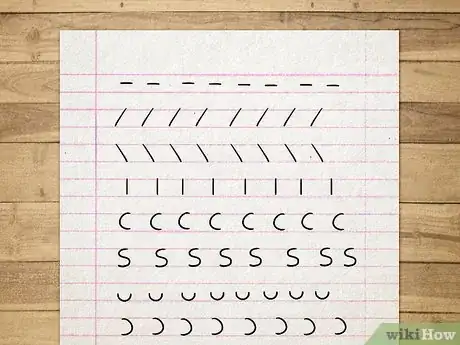
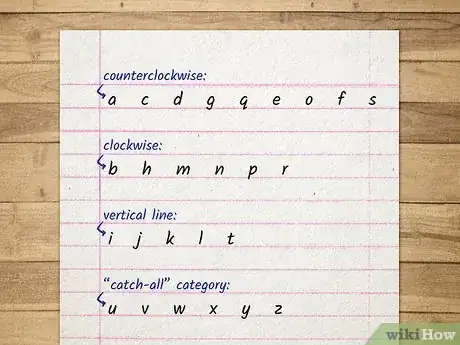

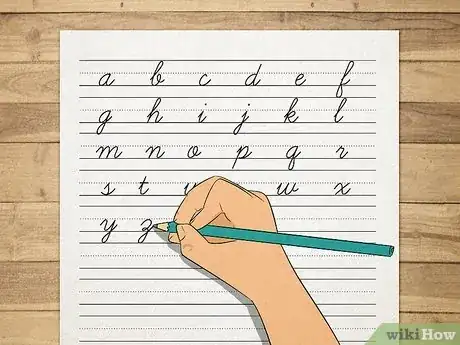




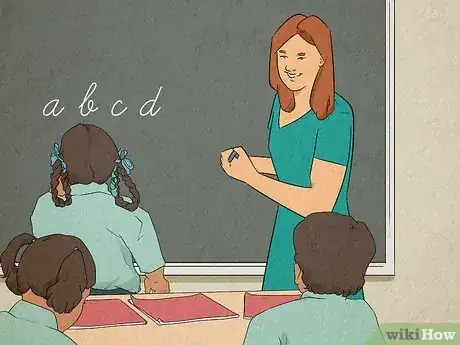

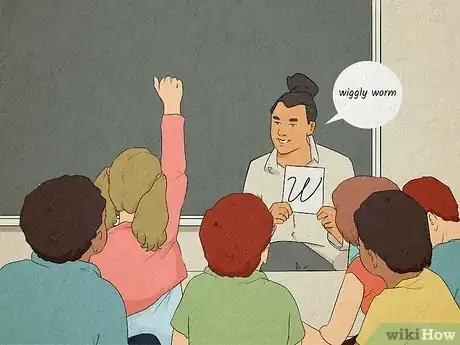

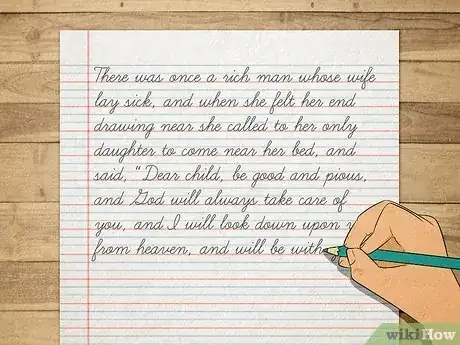






-Step-15.webp)


